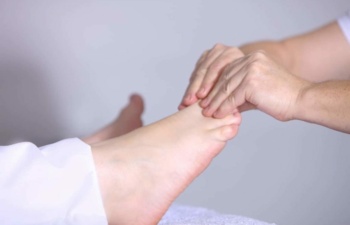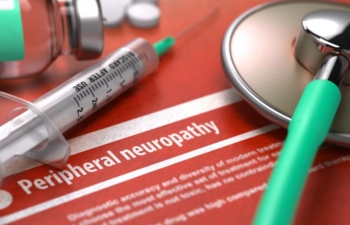Diabetic neuropathy is present in more than half of cases and is painful in a quarter of people with diabetes. Treatment for diabetic neuropathy should be a combination of modern medications and traditional therapies. Each method has its own advantages and disadvantages. Natural remedies and traditional methods can be useful in preventing the progression of diabetic neuropathy and, in some cases, can even reverse it.
Medications for diabetic nerve pain are mainly used to relieve symptoms. They belong to the class of drugs used to treat seizures, depression and opioid painkillers. Most medications prescribed for diabetic neuropathy cannot change the course of the disease. Therefore, strict control of blood glucose levels remains the mainstay of neuropathy treatment and prevention.
Seizure Drugs
This type of medication remains the treatment of choice and is recommended as first-line treatment by various professional organisations such as the American Diabetes Association. One of the most common medications prescribed to treat diabetic nerve pain is pregabalin. Pregabalin can provide consistent pain relief and improve sleep quality. It is usually given at a dose of 300-600 mg daily in two divided doses. Another similar drug, gabapentin, may also help with nerve pain.
Other anti-epileptic drugs such as oxcarbazepine, lamotrigine and lacosamide have not been shown to help with nerve pain and are rarely used. It is also important to know that these drugs may have side effects and are not recommended during pregnancy. Dizziness, headache, weight gain and drowsiness are the most commonly reported side effects of these drugs.
Antidepressant Drugs
It is a large family of drugs that have been shown to be clinically useful for pain relief. Amitriptyline is perhaps the most studied drug in this group. It has been shown to be beneficial in the majority of cases, although side effects are common and one third of people are unable to continue using the drug in the long term.
A serotonin-norepinephrine reuptake inhibitor (SNRI) called duloxetine was one of the first drugs to be approved by the FDA for the treatment of nerve pain associated with diabetes, although it is less effective than amitriptyline but is known to cause fewer side effects.
Desipramine, imipramine or fluoxetine are other drugs that may be recommended in some cases.
Opioid-like Drugs
These are powerful painkillers, but they are not intended for long-term use. They can also become less effective over time. Opioids are still the drugs of choice when other drugs fail to relieve pain. One of the most commonly used opioid-like drugs prescribed for nerve pain is tramadol. As with all opioids, it can cause side effects such as constipation, nausea and dizziness. Opiates are known to cause addiction due to their effects on other brain centres.
Topical Medications
They are applied locally to the skin at the site of the pain and can be given at any time during treatment. Because they are applied to the surface, they have fewer side effects but would be less effective in relieving pain. The most commonly prescribed topical medications are
Capsaicin has been shown to benefit from nerve pain caused due to diabetes significantly. In some people it may cause burning sensation, else side effects are rare.
Lidocaine is a potent local anesthetic that relieves pain instantly; it is comparable to many oral medications but with fewer side effects.
Isosorbide dinitrate spray (ask your doctor) is a vasodilator and muscle relaxant (e.g. MRM Relax-All), it improves the blood flow towards sensitive nerves, and decreases the sensation of pain.
Other Treatments
Benfotiamine, a derivative of vitamin B1, has been found to be useful for painful neuropathy associated with diabetes. However, its long-term effectiveness is not known, but it may be useful when used with other medicines. Because it is a derivative of vitamin B1, there are no side effects from this medicine.
Alpha lipoic acid is perhaps one of the most studied antioxidants for neuropathic pain. Clinical trials have shown that 600 mg of alpha lipoic acid given intravenously for three weeks can help reduce the sensation of nerve pain for up to a year. However, the effectiveness of an oral form of alpha lipoic acid is questionable.
Nerve pain is a long-term problem for many people with diabetes; it is difficult to reverse, although early treatment can slow its progression. Many medications are used to relieve pain, but they are not equally effective in all people. When choosing a medication for nerve pain, it is important to understand that they have many side effects. Finally, it is important to understand that there is no quick fix for diabetic neuropathy and any type of medication would need time to work. Many of these drugs would also require dose adjustments before the optimal effect is felt.








Coconut Water may be helpful.